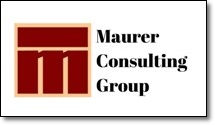“It’s not that they can’t see the solution, it’s that they can’t see the problem.”
–G.K. Chesterton ‘Scandal of Father Brown’ (1935)
 Back in 1935, English author and essayist, G. K. Chesterton realized that many people had more difficulty recognizing their problems and challenges than in finding solutions for them. Decades later, many entrepreneurs and business leaders continue to have this shortcoming. Even now, in our modern world, many startups avoid analyzing potential challenges. What could be better than analyzing potential problems and preparing solutions to deal with them? Makes you wonder just how far we’ve come during those decades, doesn’t it?
Back in 1935, English author and essayist, G. K. Chesterton realized that many people had more difficulty recognizing their problems and challenges than in finding solutions for them. Decades later, many entrepreneurs and business leaders continue to have this shortcoming. Even now, in our modern world, many startups avoid analyzing potential challenges. What could be better than analyzing potential problems and preparing solutions to deal with them? Makes you wonder just how far we’ve come during those decades, doesn’t it?
Too many entrepreneurs jump into the business world with nothing more than an idea fueled by their own passion. Envisioning wild success, they take their hot new idea for a product or service and just ‘go into business’. Unfortunately, those startups bypass the need for upfront research and planning. They skip over the planning phase that puts the business and its necessary components into perspective. They fail to realize the importance of logic and analysis.
A well developed plan is what provides focus and direction to strategically move the company toward success. That plan can eliminate the need to juggle a variety of unforeseen problems coming from all directions during the early phases of a start up company. Solutions to potential challenges can be identified early in the process.
Solutions Help Small Businesses Avoid These Hazards:
- Without that necessary analytical approach to planning for success, everything tends to be done on the run, moving forward — with any luck — but, in a haphazard manner. It’s very difficult to move forward if you are looking back over your shoulder all the time. Instead of the business moving forward with focus and direction, chaos prevails. Leadership spends unnecessary time putting out fires that get in the way of their ability to work on the structure and infrastructure of the firm.
- Without the necessary time to focus on the mechanics of the business, chaos will become the culture of the firm. Order and a clear path toward their original vision are missing. Policies, systems and procedures are not designed to keep work flowing smoothly toward the owner’s vision. The corporate culture is unable to develop in a manner where all of the company’s stakeholders are able to work together to achieve successful results and a reasonable profit margin.
- Without the ability to clearly see and analyze potential problems, it is unlikely appropriate strategic solutions will be developed to get the firm on track. Successful railroads lay tracks between multiple points, in the most logical and cost effective directions. Only then is a train put on the track to move easily between destinations. Sometimes mountains are in the way. Track is laid either around them or through them, whichever provides the best solutions. When bodies of water are in the way, bridges are built to go over them, or they lay tracks around them.
Analyzing situations and related challenges up front allows for developing solutions before setting off on a journey. Take the time necessary to review potential problems before they become barriers to your success. Know what might challenge your journey toward success in advance. You then have the opportunity to consider how to handle anything that might slow you down.






